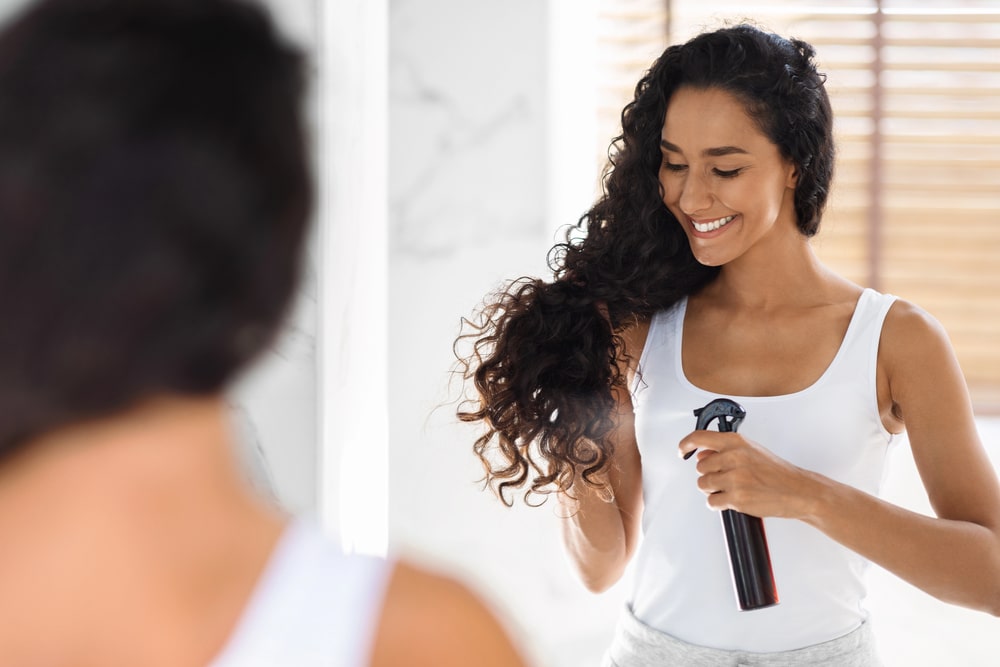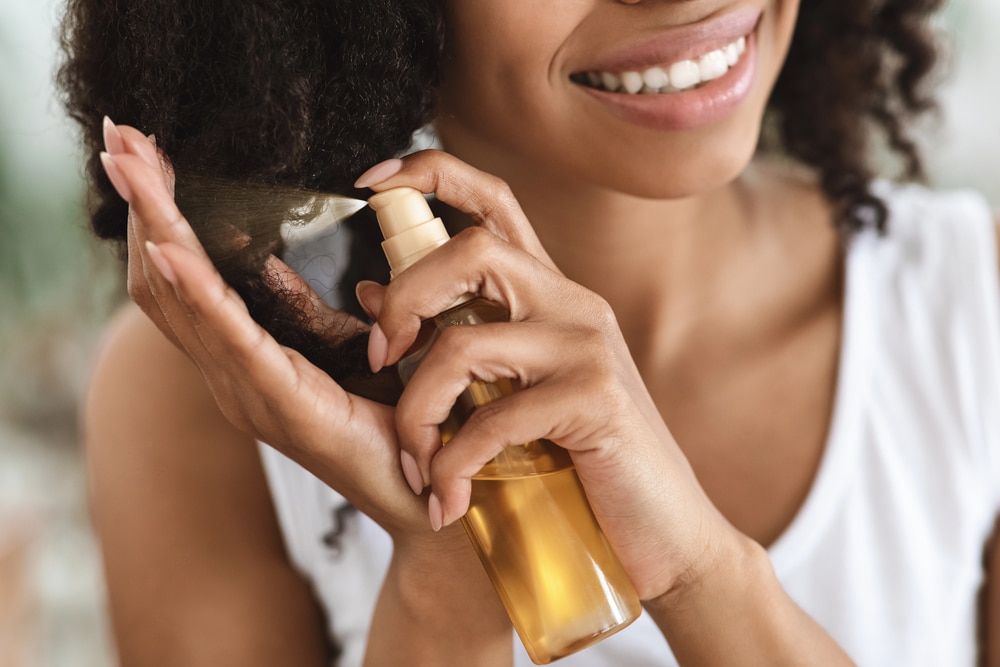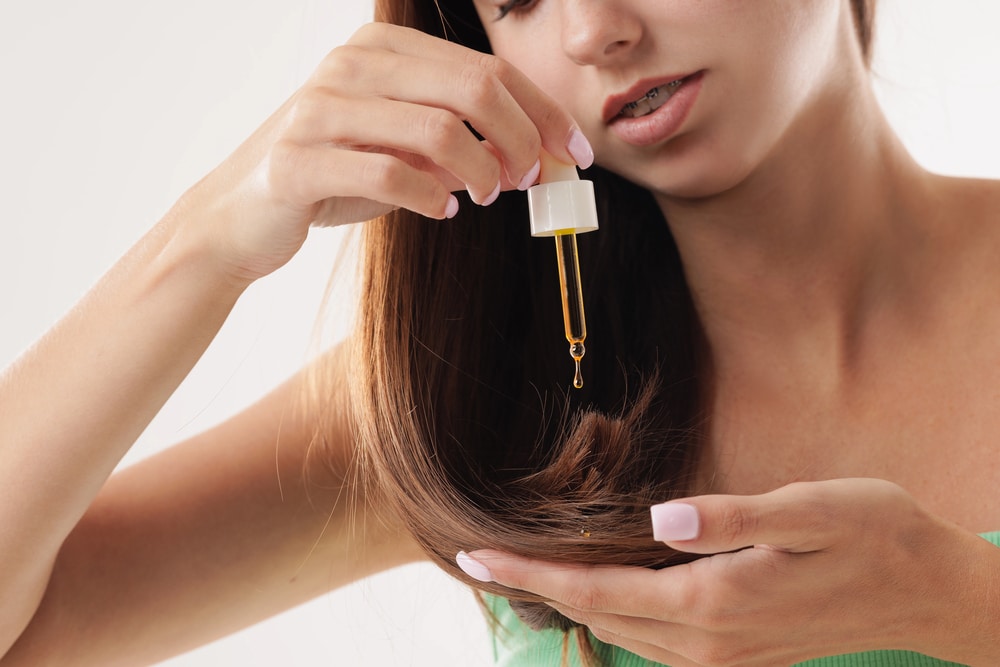Many people avoid using a scalp spray for hair support because they worry it will make their hair look greasy or heavy.
However, sprays can actually be a lighter choice than thick creams or oils if used correctly. Instead of spraying on the roots, it’s better to mist the mid-lengths and ends to keep hair shiny and smooth without build-up. It also helps to use the spray on clean, damp hair so it absorbs better.
With the right technique, you can get healthy, polished hair without the greasy feel.
Key Takeaways
- Lightly mist mid-lengths and ends, not roots.
- Choose lightweight products for your hair type.
- Apply post-wash on damp hair for best results.
How To Apply Hair Oil Spray Without Making Hair Look Greasy

Preventing a greasy appearance with hair oil spray depends on using the correct product and applying it strategically. Attention to hair type, moisture level, and precise application area all play important roles.
Select the Right Hair Oil Spray for Your Hair Type
Choosing a suitable hair oil spray is the first step. Lighter formulas are best for fine or thin hair, while richer blends work for thick or curly hair. Look for sprays specifically labeled as non-greasy or suitable for daily use.
For fine or straight hair, opt for products made with lightweight oils like argan oil or labeled for “lite” application. These absorb quickly and don’t weigh hair down.
Thick or curly hair types may benefit from products that blend nourishing oils without heavy silicones. It’s also important to avoid heavy oils on hair prone to greasiness.
Check the ingredient list for silicones like cyclopentasiloxane, which help reduce residue. For curly or very dry hair, select oil sprays that offer extra hydration but still absorb well, keeping strands soft without slickness.

Apply on Damp or Towel-Dried Hair
Application timing influences the results. It is most effective to use oil spray on damp, towel-dried hair after washing. This helps distribute the product evenly and locks in moisture without build-up.
Spray a light mist onto your hair, holding the bottle about 6-8 inches away. Avoid soaking any section, use just enough to create a fine sheen.
Damp application prevents oils from sitting heavily on hair strands. This method is particularly helpful for those with dry or curly hair, as it helps seal in needed moisture.
Comb through with a wide-tooth comb for even coverage, especially important for curly or thicker types. When hair dries, it should appear smooth and hydrated, not oily.
Focus on Mid-Lengths and Ends
Application placement is critical. Always direct hair oil spray at the mid-lengths and ends of the hair, not at the roots.
The roots naturally produce more oil and can quickly look greasy. Part hair into sections or lift layers to ensure even coverage.
Mist lightly and avoid spraying close to the scalp. If using hands to spread the oil spray, apply just a small amount to avoid buildup.
Pay extra attention to the tips, which are usually drier and prone to split ends. This approach nourishes and protects damaged sections while keeping the hair’s natural volume and freshness at the crown. If hair feels dry after styling, a small additional spritz can be applied to the ends only, without disturbing the rest of the hair. This maintains a healthy shine without extra weight.

Expert Tips and Best Practices for Grease-Free Results
Applying hair oil spray can add shine and nourishment, but avoiding a greasy appearance requires specific techniques. Small adjustments in product amount, application method, and formula selection help maintain healthy, manageable hair.
Determine the Ideal Amount of Hair Oil Spray
Using the correct amount of hair oil spray is essential for achieving softness and shine without residue. Most experts recommend starting with 1-2 sprays for fine or oily hair, and 2-4 sprays for thicker or more damaged hair.
Distribute the spray between the palms before applying, especially for mid-lengths and ends. This step prevents concentrated patches and ensures an even, light coating.
If split ends or dry areas are present, it’s best to start with minimal product and layer only where needed. For those who use styling products or blow-dry regularly, a small amount of oil spray can help reduce flyaways and aid in smooth styling when used sparingly.
Avoid the Scalp Area When Applying
Direct application of oil spray to the scalp is a leading cause of greasy roots. Instead, focus oil sprays on the hair’s mid-lengths and ends—these are the areas most prone to dryness and split ends.
A distance of 6 to 8 inches from the head allows for a fine mist and better coverage. For best results, section hair and lightly mist each portion, steering clear of the scalp.
When using hair oil after shampooing and before blow-drying, always apply only to towel-dried hair’s ends. This method minimizes excess oil buildup, keeping the scalp fresh and roots voluminous.
The Right Way to Use Hair Oil Spray for Healthy Shine
Applying hair oil spray the right way can help manage frizz and add shine without creating excess greasiness. Using light mists on the ends, choosing an oil appropriate for the hair type, and applying to damp hair are practical steps for natural-looking results.
Moderation in application and careful focus on mid-lengths and ends are especially effective for avoiding buildup at the roots. With these techniques, anyone can maintain healthy, polished hair without oily residue.



